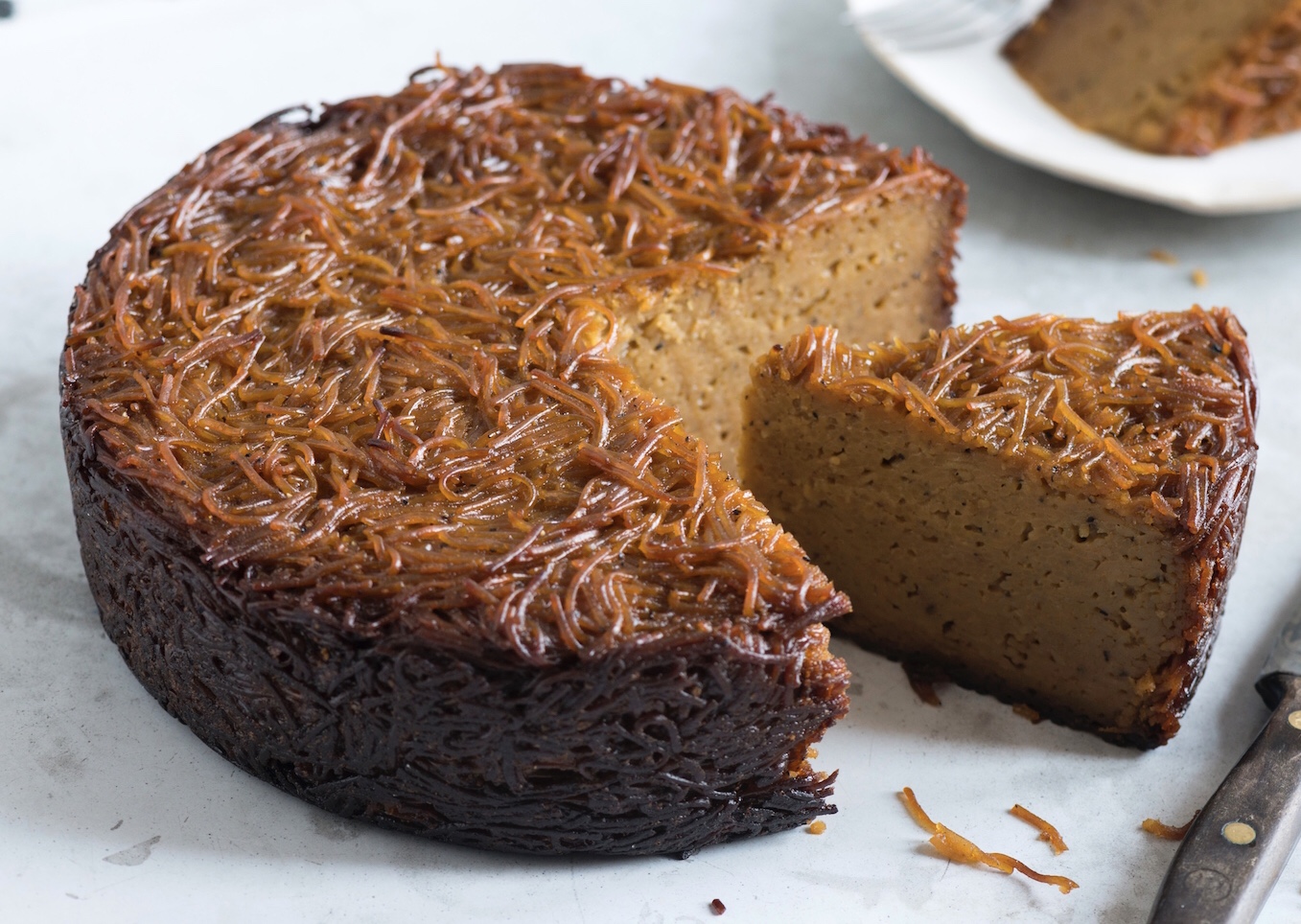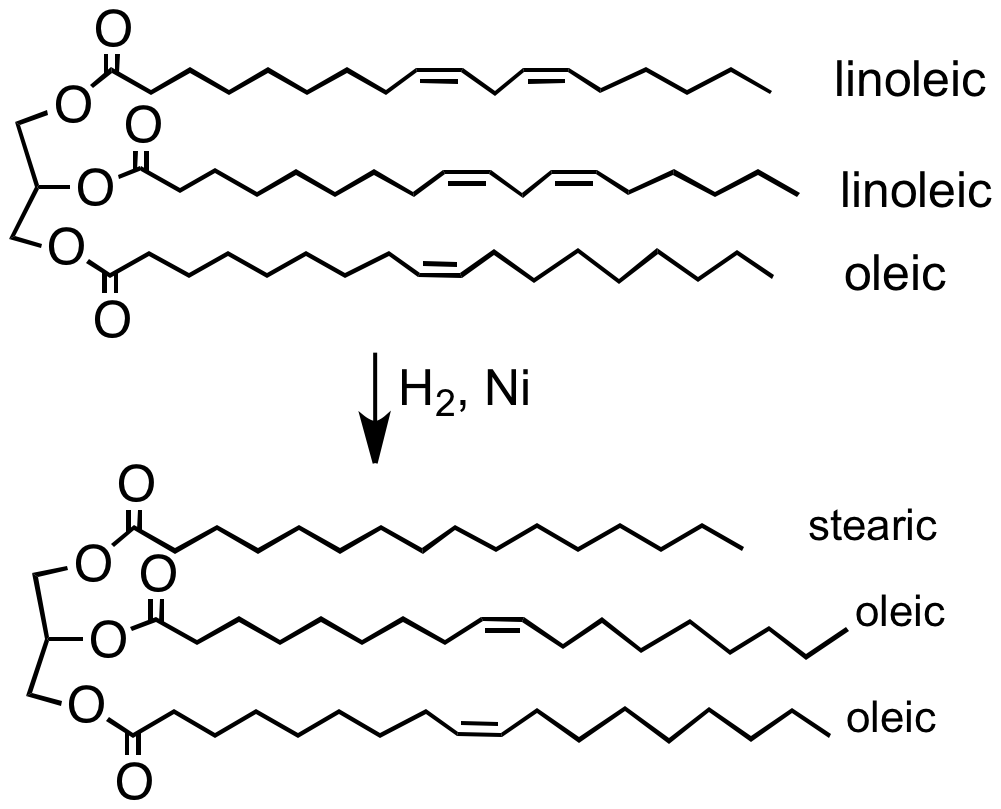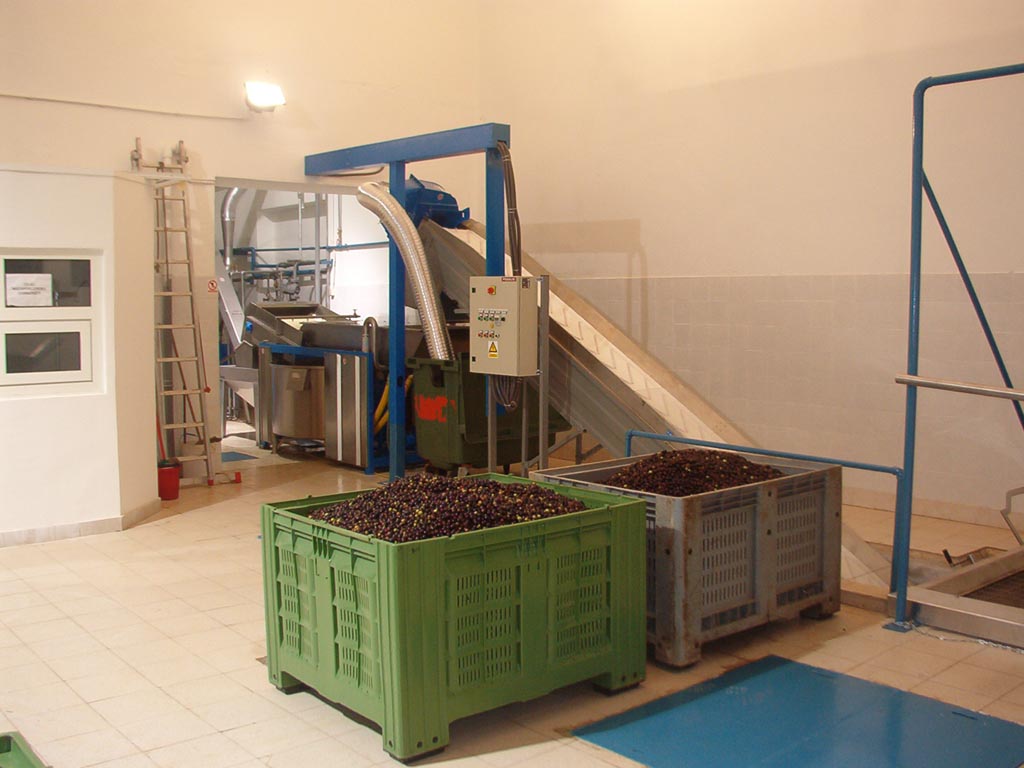|
Lokshen Kugel
Noodle kugel ( , pronounced ), also known as lokshen kugel or kigel, is an Ashkenazi Jewish casserole that is traditionally served as a side dish and popular variety of kugel made with lokshen noodles and either a variety of dairy or pareve ingredients, often served on Shabbat and Jewish holidays. Etymology The name of the dish comes from the Yiddish word meaning 'sphere, globe, ball'; thus the Yiddish name likely originated as a reference to the round balls of dough that were placed in the center of the cholent, a traditional Shabbat stew, to cook alongside it and absorb its flavors for its later use as a side dish. The kugel later would evolve into its present form sometime in the 13th century CE. History Though sweet noodle kugels predominate, there is a wide range of noodle kugel varieties ranging from sweet, slightly sweet, to savory. They may be baked in a large casserole dish or in individual ramekins. Noodle kugels often contain raisins or other dried fruits, though some ... [...More Info...] [...Related Items...] OR: [Wikipedia] [Google] [Baidu] |
Jews
Jews (, , ), or the Jewish people, are an ethnoreligious group and nation, originating from the Israelites of History of ancient Israel and Judah, ancient Israel and Judah. They also traditionally adhere to Judaism. Jewish ethnicity, religion, and community are highly interrelated, as Judaism is their ethnic religion, though it is not practiced by all ethnic Jews. Despite this, religious Jews regard Gerim, converts to Judaism as members of the Jewish nation, pursuant to the Conversion to Judaism, long-standing conversion process. The Israelites emerged from the pre-existing Canaanite peoples to establish Kingdom of Israel (Samaria), Israel and Kingdom of Judah, Judah in the Southern Levant during the Iron Age.John Day (Old Testament scholar), John Day (2005), ''In Search of Pre-Exilic Israel'', Bloomsbury Publishing, pp. 47.5 [48] 'In this sense, the emergence of ancient Israel is viewed not as the cause of the demise of Canaanite culture but as its upshot'. Originally, J ... [...More Info...] [...Related Items...] OR: [Wikipedia] [Google] [Baidu] |
Dried Fruit
Dried fruit is fruit from which the majority of the original water content has been removed prior to cooking or being eaten on its own. Drying may occur either naturally, by sun, through the use of industrial dehydrators, or by freeze drying. Dried fruit has a long tradition of use dating to the fourth millennium BC in Mesopotamia, and is valued for its sweet taste, nutritional content, and long shelf life. In the 21st century, dried fruit consumption is widespread worldwide. Nearly half of dried fruits sold are raisins, followed by dates, prunes, figs, apricots, peaches, apples, and pears. These are referred to as "conventional" or "traditional" dried fruits: fruits that have been dried in the sun or in commercial dryers. Many fruits, such as cranberries, blueberries, cherries, strawberries, and mango are infused with a sweetener (e.g., sucrose syrup) prior to drying. Some products sold as dried fruit, like papaya, kiwifruit and pineapple, are most often candied fruit ... [...More Info...] [...Related Items...] OR: [Wikipedia] [Google] [Baidu] |
Kugel
Kugel ( , pronounced ) is a baked casserole, most commonly made from lokshen ( ) or potato ( ). It is a traditional Ashkenazi Jewish dish, often served on Shabbos and Jewish holidays. American Jews also serve it for Thanksgiving dinner. Etymology The name of the dish comes from the Middle High German meaning 'sphere, globe, ball'; thus the Yiddish name likely originated as a reference to the round, puffed-up shape of the original dishes (compare to German —a type of ring-shaped cake). However, nowadays kugel is often baked in square pans. Litvaks (Jews from Lithuania, northeastern Poland and northern Russia) call the pudding , Galitzianers (Jews from southeastern Poland and western Ukraine) call it . History The first kugels were made from bread and flour and were savory rather than sweet. About 800 years ago, Jewish cooks in Germany replaced bread mixtures with lokshen noodles or farfel. Eventually eggs were incorporated. The addition of cottage cheese and milk creat ... [...More Info...] [...Related Items...] OR: [Wikipedia] [Google] [Baidu] |
Ashkenazi Jewish
Ashkenazi Jews ( ; also known as Ashkenazic Jews or Ashkenazim) form a distinct subgroup of the Jewish diaspora, that Ethnogenesis, emerged in the Holy Roman Empire around the end of the first millennium Common era, CE. They traditionally speak Yiddish, a language that originated in the 9th century, and largely migrated towards Northern Europe#UN geoscheme classification, northern and eastern Europe during the late Middle Ages due to Antisemitism in Europe, persecution. Hebrew was primarily used as a Literary language, literary and sacred language until its 20th-century Revival of the Hebrew language, revival as a common language in Israel. Ashkenazim adapted their traditions to Europe and underwent a transformation in their interpretation of Judaism. In the late 18th and 19th centuries, Jews who remained in or returned to historical German lands experienced a cultural reorientation. Under the influence of the Haskalah and the struggle for emancipation, as well as the intellec ... [...More Info...] [...Related Items...] OR: [Wikipedia] [Google] [Baidu] |
Kugel Yerushalmi
Yerushalmi Kugel (), also known as Jerusalem kugel, is an Israeli kugel originating from the local Jewish community of Jerusalem in the 18th century. The dish is served on Shabbat and on Jewish holidays. History Yerushalmi Kugel is said to have been created in Jerusalem during the 1700s by local Ashkenazi Jews, followers of the Vilna Gaon, a Jewish religious scholar. Overview Jerusalem kugel differs from other traditional Ashkenazi style noodle kugels in a number of ways. Nonetheless, it has become a staple of Ashkenazi foods. Jerusalem kugel is always made with thin egg noodles, similar in appearance to spaghetti. The defining ingredient of Jerusalem kugel is black pepper, which is uncommon in other varieties of kugel, and which can give it what the ''New York Times'' food writer Melissa Clark has described as a "sinus-clearing" potency. It is made with a sauce similar to caramel, which the noodles are then coated with and then seasoned with black pepper before being plac ... [...More Info...] [...Related Items...] OR: [Wikipedia] [Google] [Baidu] |
Graham Crackers
A graham cracker (pronounced or in America) is a sweet flavored cracker made with graham flour that originated in the United States in the mid-19th century, with commercial development from about 1880. It is eaten as a snack food, usually honey- or cinnamon-flavored, and is used as an ingredient in some foods, e.g., in the graham cracker crust for cheesecakes and pies. History The graham cracker was inspired by the preaching of Sylvester Graham, who was part of the 19th-century temperance movement. He believed that minimizing pleasure and stimulation of all kinds, including the prevention of masturbation, coupled with a vegetarian diet anchored by bread made from wheat coarsely ground at home, was how God intended people to live, and that following this natural law would keep people healthy. Towards that end, Graham introduced the world's first graham wafer product. It was a dull, unsifted flour biscuit baked by Graham himself. The sugarless wafers were a key component of th ... [...More Info...] [...Related Items...] OR: [Wikipedia] [Google] [Baidu] |
Streusel
In baking and pastry making, streusel () is a crumbly topping of flour, butter, and sugar that is baked on top of muffins, breads, pies, and cakes. wisegeek.com, Accessed 8 February 2015 Some modern recipes add and chopped nuts. The mixture can also be layered or ribboned in the middle of a cake. Some baked dishes which have a streusel topping are streuselkuchen, coffee cake, |
Cornflakes
Corn flakes, or cornflakes, are a breakfast cereal made from toasting flakes of corn (maize). Originally invented as a breakfast food to counter indigestion, it has become a popular food item in the American diet and in the United Kingdom where over 6 million households consume them. The cereal, originally made with wheat, was created by Will Kellogg in 1894 for patients at the Battle Creek Sanitarium where he worked with his brother John Kellogg who was the superintendent. The breakfast cereal proved popular among the patients and Kellogg subsequently started what became the Kellogg Company to produce corn flakes for the wider public. A patent for the process was granted in 1896, after a legal battle between the two brothers. With corn flakes becoming popular in the wider community, a previous patient at the sanitarium, C. W. Post, started to make rival products. Kellogg continued to experiment with various ingredients and different grains. In 1928, he started to manufacture ... [...More Info...] [...Related Items...] OR: [Wikipedia] [Google] [Baidu] |
Applesauce
Apple sauce is a purée (not necessarily served as a true sauce) made of apples. It can be made with peeled or unpeeled apples and can be spiced or sweetened. Apple sauce is inexpensive and is widely consumed in North America and some parts of Europe. A wide range of apple varieties are used to make apple sauce, depending on the preference for sweetness or tartness. Formerly, sour apples were usually used to make savory apple sauce. Commercial versions of apple sauce are readily available at supermarkets and other retail outlets. Preparation Apple sauce is made by cooking apples with water or apple cider (fresh apple juice). More acidic apples will render a finer purée; the highly acidic Bramley apple creates a very fine purée. The apples may or may not be peeled. If they are not peeled, the peels and seeds are typically separated in a food mill. Sugar and spices such as cinnamon, allspice, and even Red Hots, Red Hot candies may be added for flavor. Lemon juice, citric acid ... [...More Info...] [...Related Items...] OR: [Wikipedia] [Google] [Baidu] |
Margarine
Margarine (, also , ) is a Spread (food), spread used for flavoring, baking, and cooking. It is most often used as a substitute for butter. Although originally made from animal fats, most margarine consumed today is made from vegetable oil. The spread was originally named ''oleomargarine'' from Latin for ''oleum'' (olive oil) and Greek language, Greek ''margarite'' ("pearl", indicating luster). The name was later shortened to ''margarine'', or sometimes ''oleo'' (particularly in the Deep South). Margarine consists of a water-in-fat emulsion, with tiny droplets of water dispersed uniformly throughout a fat phase (chemistry), phase in a stable solid form. While butter is made by concentrating the butterfat of milk through centrifugation, modern margarine is made through a more intensive processing of refined vegetable oil and water. Per US federal regulation, products must have a minimum fat content of 80% (with a maximum of 16% water) to be labeled as such in the United States, ... [...More Info...] [...Related Items...] OR: [Wikipedia] [Google] [Baidu] |
Cooking Oil
Cooking oil (also known as edible oil) is a plant or animal liquid fat used in frying, baking, and other types of cooking. Oil allows higher cooking temperatures than water, making cooking faster and more flavorful, while likewise distributing heat, reducing burning and uneven cooking. It sometimes imparts its own flavor. Cooking oil is also used in food preparation and flavoring not involving heat, such as salad dressings and bread dips. Cooking oil is typically a liquid at room temperature, although some oils that contain saturated fat, such as coconut oil, palm oil and palm kernel oil are solid. There are a wide variety of cooking oils from plant sources such as olive oil, palm oil, soybean oil, canola oil ( rapeseed oil), corn oil, peanut oil, sesame oil, sunflower oil and other vegetable oils, as well as animal-based oils like butter and lard. Oil can be flavored with aromatic foodstuffs such as herbs, chilies or garlic. Cooking spray is an aerosol of coo ... [...More Info...] [...Related Items...] OR: [Wikipedia] [Google] [Baidu] |
Cream Cheese
Cream cheese is a soft, usually mild-tasting fresh cheese made from milk and cream.Oxford English Dictionary Cream cheese is not naturally matured and is meant to be consumed fresh, so it differs from other soft cheeses such as Brie and Neufchâtel. It is more comparable in taste, texture, and production methods to Boursin and mascarpone. Stabilizers such as carob bean gum and carrageenan are often added in industrial production. It can also come in several flavors. The U.S. Food and Drug Administration defines cream cheese as containing at least 33% milk fat with a moisture content of not more than 55%, and a pH range of 4.4 to 4.9. Similarly, under Canadian Food and Drug Regulations, cream cheese must contain at least 30% milk fat and a maximum of 55% moisture. In other countries, it is defined differently and may need a considerably higher fat content. Cream cheese originated in the United States in the 1870s. Origin Around 1873, William A. Lawrence, a dairyman in C ... [...More Info...] [...Related Items...] OR: [Wikipedia] [Google] [Baidu] |






